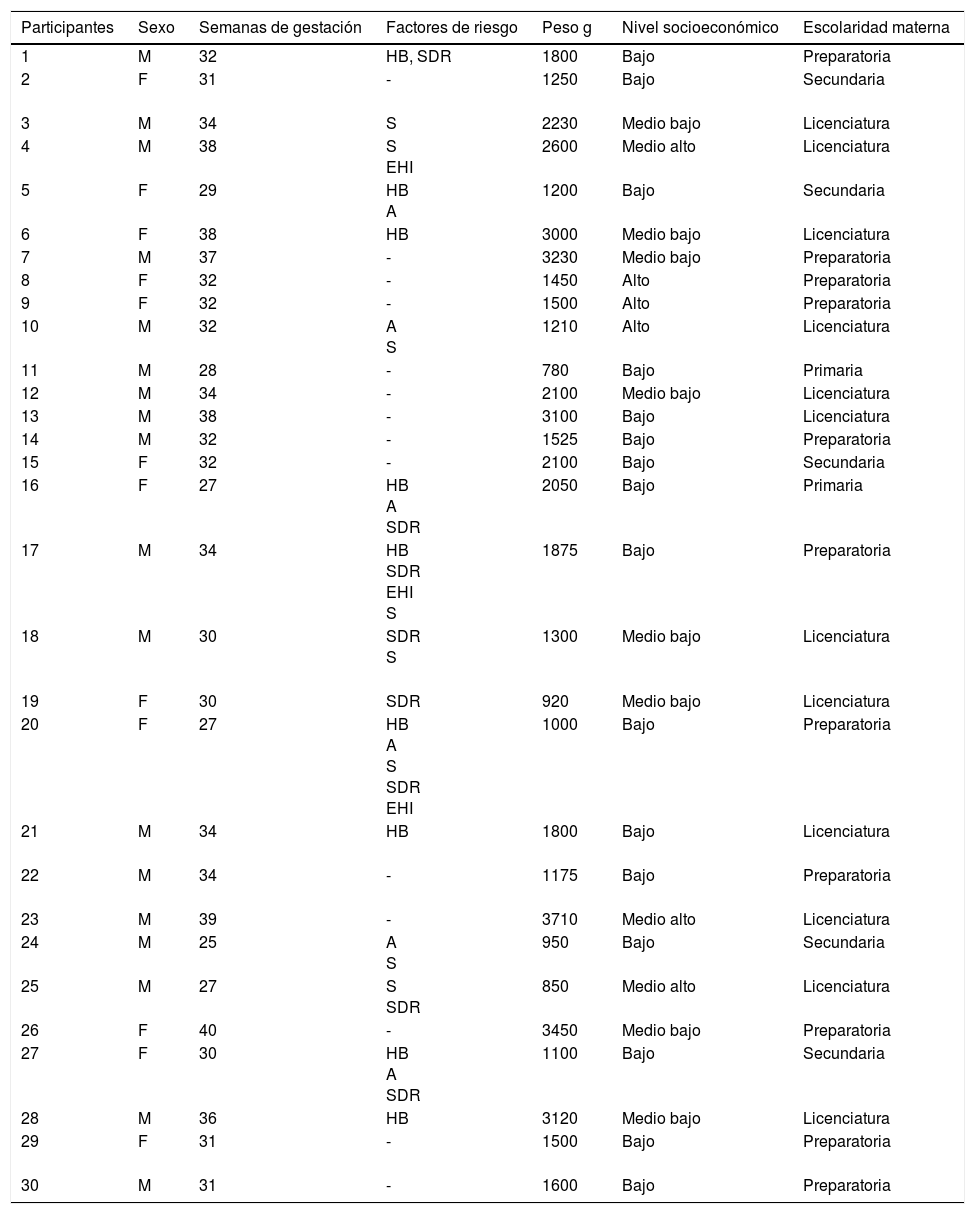Existen escasas pruebas conductuales validadas para hispanoparlantes que incluyen dentro de sus normas lactantes normo-oyentes con riesgo de daño cerebral perinatal. Sin medidas conductuales validadas, los clínicos usan pruebas que no están normadas para esta población, como el Inventario de Habilidades Comunicativas MacArthur-Bates (SCDI). Estudios electrofisiológicos han mostrado que las subpruebas comprensión y producción de palabras de dicho inventario tienen un alto poder discriminante en estas poblaciones en riesgo cuando se ajusta la norma de la prueba al percentil 50. Se examinó dicha norma ajustada en la práctica clínica.
MétodoDiseño de un solo grupo y selección de la muestra semialeatoria. Se seleccionaron 30 niños con factores de riesgo de daño cerebral perinatal de la Unidad de investigación en Neurodesarrollo a los que se les hubiera aplicado el inventario al año de edad y la Escala de Lenguaje Preescolar (PLS-5) entre los 3 y 4 años. Se comparó la proporción de niños identificados con alteraciones en el desarrollo del lenguaje por la PLS-5 entre los 3-4 años con la proporción de niños identificados con riesgo por el SCDI al año de edad usando la norma sin ajustar y la norma ajustada.
ResultadosLa norma ajustada del SCDI permitió identificar una proporción de niños con riesgo del lenguaje al año de edad similar a la proporción que se identificó con alteraciones entre los 3 y 4 años.
ConclusiónDebería considerarse una norma ajustada cuando se examinen poblaciones con riesgo de daño cerebral usando el Inventario SCDI al año de edad.
There are few validated language test for Spanish speakers that cover normo-listeners infants at risk of brain damage. Without validated behavioural measures, clinicians use test that are not standardised for this population, such as the MacArthur-Bates Communicative Skills Inventory (SCDI). Electrophysiological studies have shown that the comprehension and word production sub-test of such inventory have high discriminatory power in these at-risk populations when the test standard is adjusted to the 50th percentile. This adjusted standard was examined in clinical practice.
MethodsDesign of a single group and selection of the semi-random sample. We selected 30 infants at risk of brain damage from the Neurodevelopment Research Unit to which the Inventory at one year old and the Preschool Language Scale (PLS-5) were applied between the ages of 3 and 4 years. We compared the proportion of children identified with language developmental impairments by PLS-5 between the ages of 3-4 with the proportion of children identified at risk by SCDI at one year of age using the non-adjusted norm and adjusted norm.
ResultsThe adjusted SCDI standard allowed the identification of a proportion of infants at risk of brain damage and also at risk of language development impairments at one year of age, similar to the proportion that was identified with impairments between 3 and 4 years.
ConclusionAn adjusted norm should be considered when examining infants at risk of brain damage using the SCDI Inventory at one year of age.
Artículo
Comprando el artículo el PDF del mismo podrá ser descargado
Precio 19,34 €
Comprar ahora











